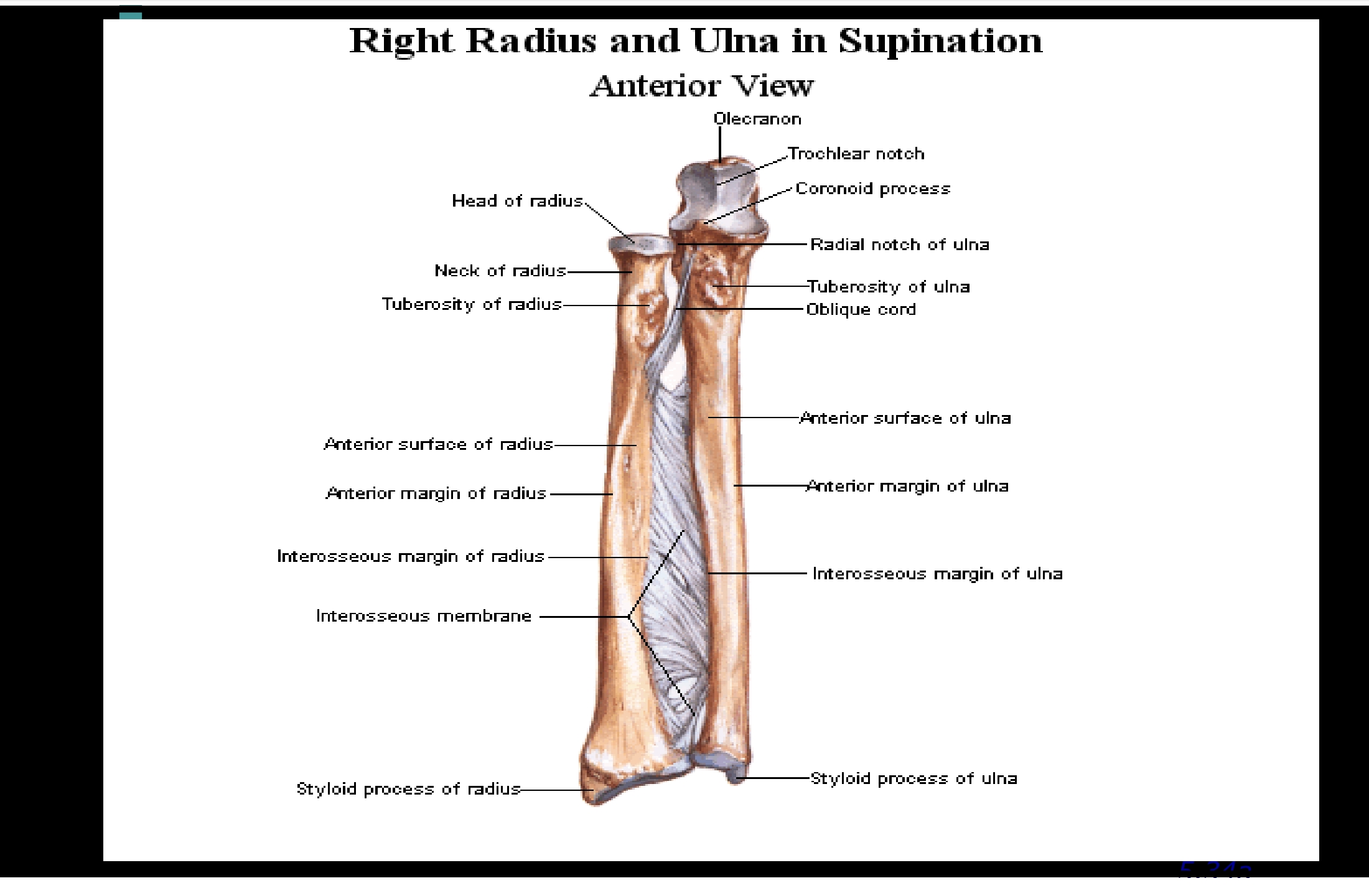What are the key anatomical features of the right radius and ulna in supination as shown in the provided image?

Understand the Problem
The question appears to involve anatomical terminology and structures of the radius and ulna in the context of supination, possibly related to an assignment or study material for anatomy students.
Answer
Head, neck, tuberosity, and styloid process of radius; olecranon, trochlear notch, coronoid process, radial notch, tuberosity, and styloid process of ulna; interosseous membrane.
The key anatomical features of the right radius and ulna in supination include: the head, neck, tuberosity, and styloid process of the radius; olecranon, trochlear notch, coronoid process, radial notch, tuberosity, and styloid process of the ulna; and the interosseous membrane between them.
Answer for screen readers
The key anatomical features of the right radius and ulna in supination include: the head, neck, tuberosity, and styloid process of the radius; olecranon, trochlear notch, coronoid process, radial notch, tuberosity, and styloid process of the ulna; and the interosseous membrane between them.
More Information
In supination, the radius and ulna are parallel and the palm faces upward. This position is key for anatomical orientation.
Tips
A common mistake is confusing the proximal and distal features between the radius and ulna.
Sources
- Radius and ulna: Anatomy and function - Kenhub - kenhub.com
- Pronation and supination: Anatomy, definition, images - Kenhub - kenhub.com
- The Radioulnar Joints - TeachMeAnatomy - teachmeanatomy.info
AI-generated content may contain errors. Please verify critical information